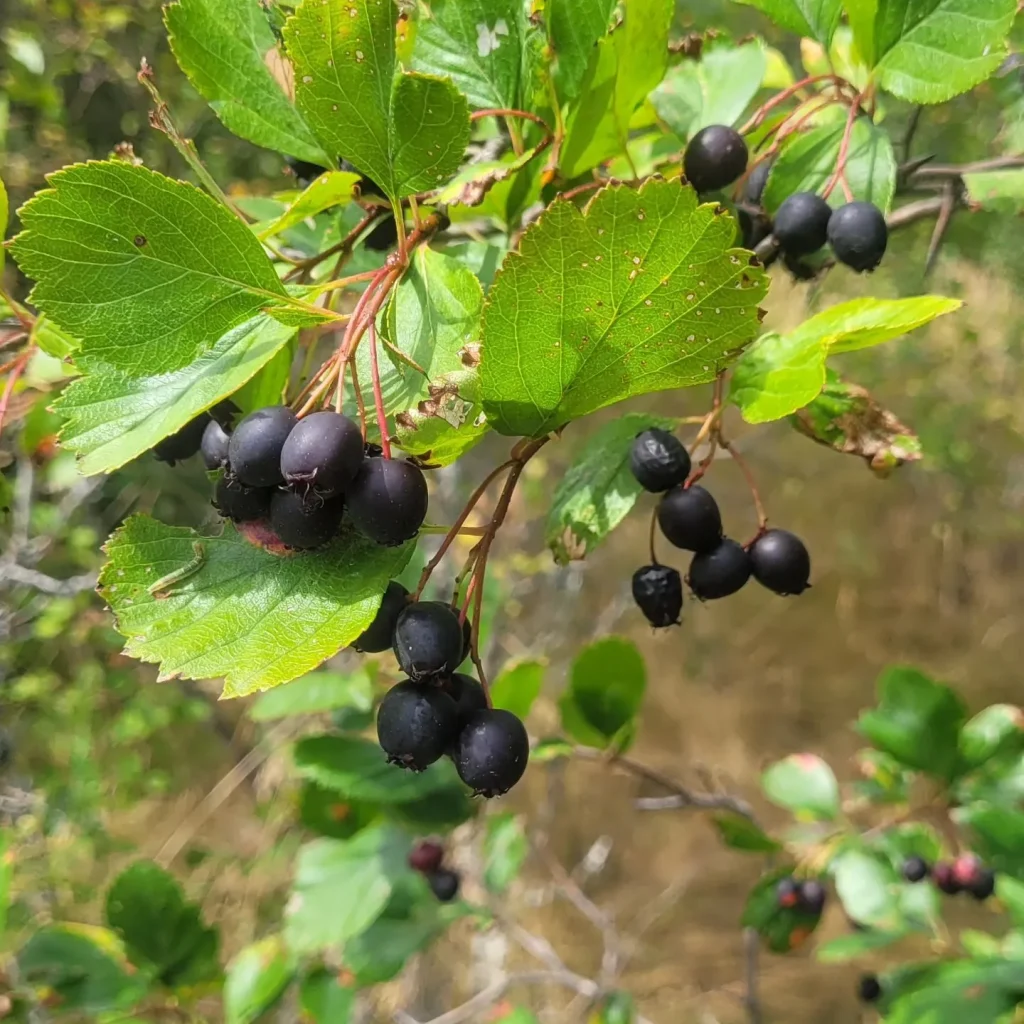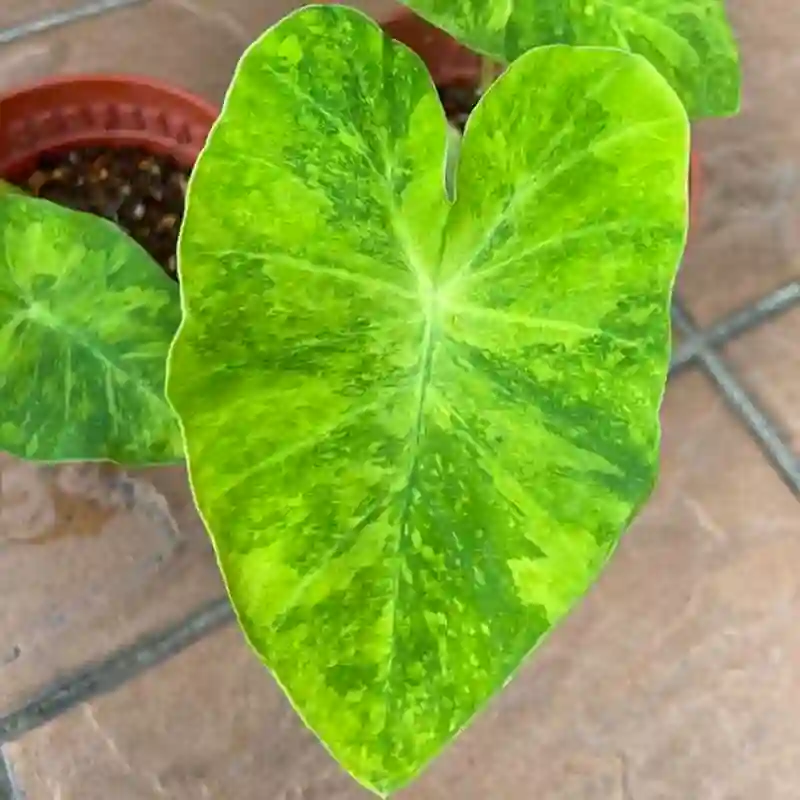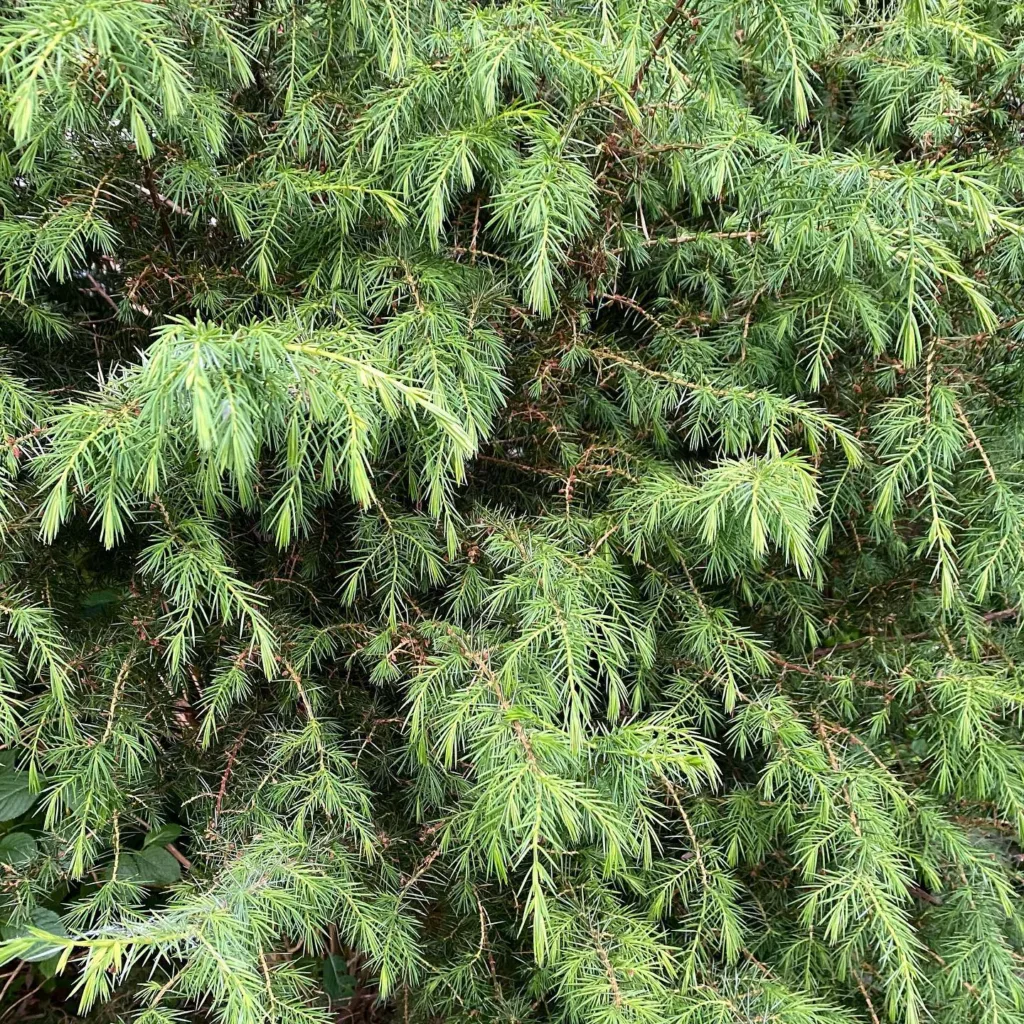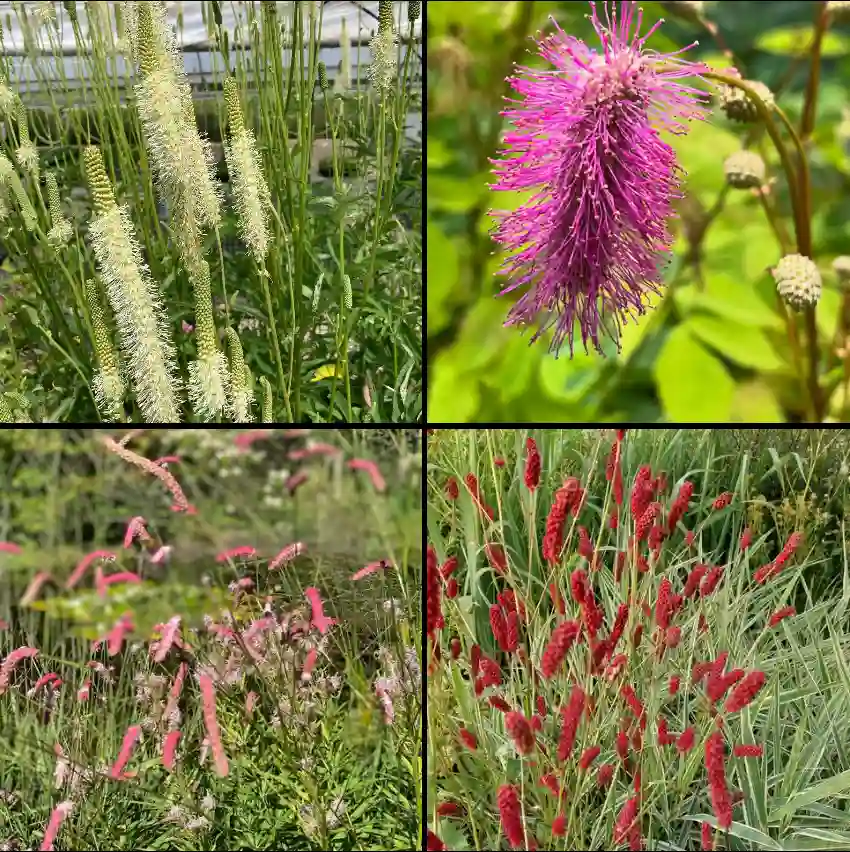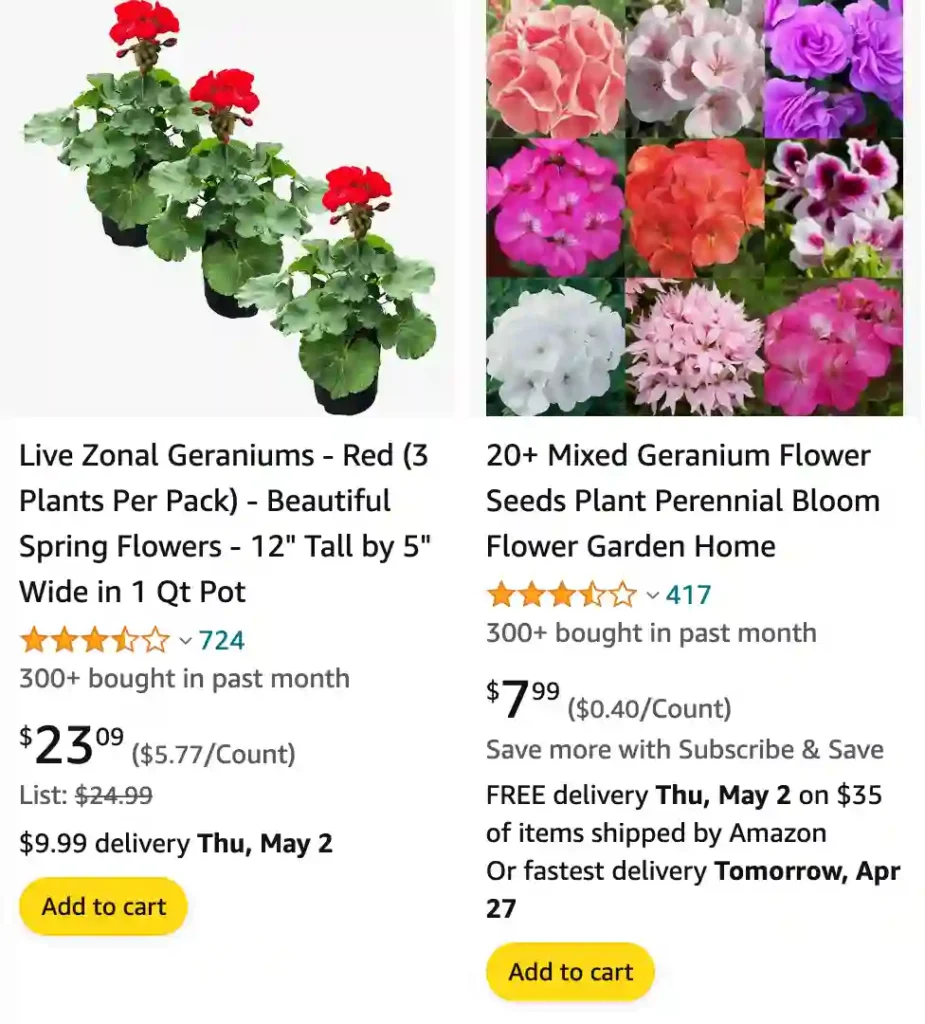
Exploring the Genus Geranium Through My Eyes
The genus Geranium has been a fascinating part of my gardening journey. These resilient, elegant plants have captivated me with their variety, adaptability, and charm. From vibrant garden beds to naturalized meadows, Geraniums have proven themselves as versatile stars. Let me walk you through my experience with this wonderful genus.
Understanding the Genus Geranium
The genus Geranium belong to the Geraniaceae family, often called cranesbills, comprises over 300 species of perennial, biennial, and annual plants. Native to temperate regions, these plants are well-known for their lobed leaves, delicate flowers, and hardiness. Unlike the Pelargonium genus, commonly mislabeled as geraniums, true Geraniums offer cold tolerance and natural beauty.
I’ve always admired their adaptability. Whether nestled in my shaded garden corners or sunlit beds, these plants thrive with minimal fuss. Their flowers range from pastel pinks to deep purples, and some even produce vivid reds and whites. This diversity makes them indispensable for gardeners looking to add texture and color to their landscapes.
What does geranium smell like?
Geranium has this wonderfully complex scent that I find both floral and earthy at the same time. It’s like a garden after a fresh rain, with hints of rose, citrus, and a subtle greenness that’s so invigorating. Whenever I catch a whiff of geranium, it instantly transports me back to my grandmother’s garden, where she had rows of them blooming profusely. There’s something comforting and nostalgic about its fragrance that I can’t quite put into words, but it’s definitely one of my favorites.
Geranium species
- Geranium aculeolatum Oliv.
- Geranium aedonianum Hurrah & V.Wagh
- Geranium aequale (Bab.) Aedo
- Geranium affine Ledeb.
- Geranium afrum Eckl. & Zeyh.
- Geranium albanum M.Bieb.
- Geranium albicans A.St.-Hil.
- Geranium albiflorum Ledeb.
- Geranium alboroseum Bomble
- Geranium alonsoi Aedo
- Geranium alpicola Loes.
- Geranium amatolicum Hilliard & B.L.Burtt
- Geranium andicola Loes.
- Geranium andringitrense H.Perrier
- Geranium angustipetalum Hilliard & B.L.Burtt
- Geranium antisanae R.Knuth
- Geranium antrorsum Carolin
- Geranium arabicum Forssk.
- Geranium arachnoideum A.St.-Hil.
- Geranium arboreum A.Gray
- Geranium ardjunense Zoll. & Moritzi
- Geranium argenteum L.
- Geranium aristatum Freyn & Sint.
- Geranium asiaticum Serg.
- Geranium asphodeloides Burm.f.
- Geranium atlanticum Boiss.
- Geranium ayacuchense R.Knuth
- Geranium ayavacense Willd. ex Kunth
- Geranium azorelloides Sandwith
- Geranium balgooyi Veldkamp
- Geranium baschkyzylsaicum Nabiev
- Geranium baurianum R.Knuth
- Geranium bellum Rose
- Geranium bequaertii De Wild.
- Geranium berteroanum Colla
- Geranium bicknellii Britton
- Geranium biuncinatum Kokwaro
- Geranium bohemicum L.
- Geranium brasiliense Progel
- Geranium brevicaule Hook.
- Geranium brevipes Hutch. & Dalziel
- Geranium brutium Gasp.
- Geranium brycei N.E.Br.
- Geranium caeruleatum Schur
- Geranium caespitosum E.James
- Geranium californicum G.N.Jones & F.F.Jones
- Geranium camaense C.C.Huang
- Geranium campanulatum Paray
- Geranium campii H.E.Moore
- Geranium canescens L’Hér.
- Geranium canopurpureum P.F.Yeo
- Geranium carolinianum L.
- Geranium castroviejoi Aedo
- Geranium cataractarum Coss.
- Geranium cavanillesii Aedo
- Geranium cazorlense Heywood
- Geranium charucanum Standl.
- Geranium chilloense Willd. ex Kunth
- Geranium christensenianum Hand.-Mazz.
- Geranium cinereum Cav.
- Geranium clarkei P.F.Yeo
- Geranium clemensiae R.Knuth
- Geranium collinum Stephan ex Willd.
- Geranium columbinum L.
- Geranium comarapense R.Knuth
- Geranium contortum Eckl. & Zeyh.
- Geranium core-core Steud.
- Geranium costaricense H.E.Moore
- Geranium crassipes Hook. ex A.Gray
- Geranium crenatifolium H.E.Moore
- Geranium crenophilum Boiss.
- Geranium cruceroense R.Knuth
- Geranium cruentum Heenan & G.M.Rogers
- Geranium cuneatum Hook.
- Geranium dachigamensis Hurrah & V.Wagh
- Geranium dahuricum DC.
- Geranium dalmaticum (Beck) Rech.f.
- Geranium delavayi Franch.
- Geranium deltoideum Rydb.
- Geranium diffusum Kunth
- Geranium digitatum R.Knuth
- Geranium discolor Hilliard & B.L.Burtt
- Geranium dissectum L.
- Geranium divaricatum Ehrh.
- Geranium dodecatheoides P.J.Alexander & Aedo
- Geranium dolomiticum Rothm.
- Geranium donianum Sweet
- Geranium drakensbergense Hilliard & B.L.Burtt
- Geranium dregei Hilliard & B.L.Burtt
- Geranium durangense H.E.Moore
- Geranium ecuadoriense Hieron.
- Geranium editum Veldkamp
- Geranium elamellatum Kokwaro
- Geranium endressii J.Gay
- Geranium erianthum DC.
- Geranium exallum H.E.Moore
- Geranium exellii J.R.Laundon
- Geranium fallax Steud.
- Geranium farreri Stapf
- Geranium favosum Hochst. ex A.Rich.
- Geranium finitimum Woronow
- Geranium flanaganii Schltr. ex R.Knuth
- Geranium foreroi Aedo
- Geranium franchetii R.Knuth
- Geranium frigidurbis Moerman
- Geranium gentryi H.E.Moore
- Geranium glaberrimum Boiss. & Heldr.
- Geranium glanduligerum R.Knuth
- Geranium goldmanii Rose ex Hanks & Small
- Geranium gracile Ledeb. ex Nordm.
- Geranium grande (Carolin) Aedo
- Geranium grandistipulatum Hilliard & B.L.Burtt
- Geranium gymnocaulon DC.
- Geranium hanaense A.C.Medeiros & H.St.John
- Geranium harveyi Briq.
- Geranium hayatanum Ohwi
- Geranium hernandesii Moc. & Sessé ex DC.
- Geranium hillebrandii Aedo & Muñoz Garm.
- Geranium himalayense Klotzsch
- Geranium hintonii H.E.Moore
- Geranium hispidissimum (Franch.) R.Knuth
- Geranium holosericeum Willd. ex Spreng.
- Geranium homeanum Turcz.
- Geranium humboldtii Spreng.
- Geranium hyperacrion Veldkamp
- Geranium hystricinum H.E.Moore
- Geranium ibericum Cav.
- Geranium igoschinae Troschkina
- Geranium incanum Burm.f.
- Geranium indicum Hurrah & V.Wagh
- Geranium jaekelae J.F.Macbr.
- Geranium jahnii Standl.
- Geranium jainii Hurrah & V.Wagh
- Geranium janakianum Aparna Shukla & V.Wagh
- Geranium jaramilloi Aedo
- Geranium kalenderianum İlçim & Behçet
- Geranium kashmirianum B.L.Sapru & S.K.Raina
- Geranium kauaiense (Rock) H.St.John
- Geranium kikianum Kit Tan & Vold
- Geranium kilimandscharicum Engl.
- Geranium killipii R.Knuth
- Geranium kishtvariense R.Knuth
- Geranium knuthii Nakai
- Geranium koreanum Kom.
- Geranium kotschyi Boiss.
- Geranium krameri Franch. & Sav.
- Geranium krylovii Tzvelev
- Geranium kurdicum Bornm.
- Geranium laetum Ledeb.
- Geranium lahulense V.Wagh & Hurrah
- Geranium lainzii Aedo
- Geranium lamberti Sweet
- Geranium lanuginosum Lam.
- Geranium lasiocaulon Nakai
- Geranium lasiopus Boiss. & Heldr.
- Geranium latilobum H.E.Moore
- Geranium latum Small
- Geranium laxicaule R.Knuth
- Geranium lazicum (Woronow) Aedo
- Geranium lechleri R.Knuth
- Geranium lentum Wooton & Standl.
- Geranium leptodactylon Veldkamp
- Geranium leucanthum Griseb.
- Geranium libani P.H.Davis
- Geranium libanoticum Schenk
- Geranium lignosum R.Knuth
- Geranium lilacinum R.Knuth
- Geranium limae R.Knuth
- Geranium lindenianum Turcz.
- Geranium linearilobum DC.
- Geranium loxense Halfd.-Niels.
- Geranium lozanoi Rose
- Geranium lucarinii Venanzoni & Wagens.
- Geranium lucidum L.
- Geranium macbridei Aedo
- Geranium macrorrhizum L. Plant FAQs: Geranium Macrorrhizum
- Geranium macrostylum Boiss.
- Geranium maculatum L.
- Geranium maderense Yeo
- Geranium madrense Rose
- Geranium magellanicum Hook.f.
- Geranium makmelicum Aedo
- Geranium malviflorum Boiss. & Reut.
- Geranium malyschevii Troschkina
- Geranium maniculatum H.E.Moore
- Geranium mascatense Boiss.
- Geranium matucanense R.Knuth
- Geranium maximowiczii Regel & Maack
- Geranium meridense Pittier
- Geranium mexicanum Kunth
- Geranium mlanjense J.R.Laundon
- Geranium molle L. Plant FAQs: Geranium Molle
- Geranium monanthum Small
- Geranium monticola Ridl.
- Geranium mooreanum Aedo
- Geranium moupinense Franch.
- Geranium multiceps Turcz.
- Geranium multiflorum A.Gray
- Geranium multipartitum Benth.
- Geranium multisectum N.E.Br.
- Geranium mutisii Aedo
- Geranium nakaoanum H.Hara
- Geranium nanum Coss. ex Batt.
- Geranium napuligerum Franch.
- Geranium natalense Hilliard & B.L.Burtt
- Geranium neglectum Carolin
- Geranium nepalense Sweet
- Geranium niuginiense Veldkamp
- Geranium nivale R.Knuth
- Geranium niveum S.Watson
- Geranium nodosum L.
- Geranium nuristanicum Schönb.-Tem.
- Geranium nyassense R.Knuth
- Geranium oaxacanum H.E.Moore
- Geranium obtusisepalum Carolin
- Geranium ocellatum Jacquem. ex Cambess.
- Geranium oreganum Howell
- Geranium ornithopodioides Hilliard & B.L.Burtt
- Geranium ornithopodon Eckl. & Zeyh.
- Geranium palmatipartitum (Hausskn. ex R.Knuth) Aedo
- Geranium palmatum Cav.
- Geranium paludosum R.Knuth
- Geranium palustre L.
- Geranium pamiricum Ikonn.
- Geranium papuanum Ridl.
- Geranium paramicola R.Knuth
- Geranium parodii I.M.Johnst.
- Geranium pavonianum Briq.
- Geranium peloponesiacum Boiss.
- Geranium persicum Schönb.-Tem.
- Geranium peruvianum Hieron.
- Geranium petri-davisii Aedo
- Geranium phaeum L.
- Geranium pilgerianum R.Knuth
- Geranium pissjaukovae Tsyren.
- Geranium planum Halloy
- Geranium platyanthum Duthie
- Geranium platypetalum Fisch. & C.A.Mey.
- Geranium platyrenifolium Z.M.Tan
- Geranium pogonanthum Franch.
- Geranium polyanthes Edgew. & Hook.f.
- Geranium ponticum (P.H.Davis & J.Roberts) Aedo
- Geranium potentillifolium DC.
- Geranium potentilloides L’Hér. ex DC.
- Geranium potosinum H.E.Moore
- Geranium pratense L.
- Geranium pringlei Rose
- Geranium probatovae Tsyren.
- Geranium procurrens Yeo
- Geranium pseudodiffusum Aedo
- Geranium pseudosibiricum J.Mayer
- Geranium psilostemon Ledeb.
- Geranium pulchrum N.E.Br.
- Geranium purpureum Vill.
- Geranium pusillum L. Plant FAQs: Geranium Pusillum
- Geranium pylzowianum Maxim.
- Geranium pyrenaicum Burm.f.
- Geranium raimondii R.Knuth
- Geranium rectum Trautv.
- Geranium reflexum L.
- Geranium refractum Edgew. & Hook.f.
- Geranium reinii Franch. & Sav.
- Geranium renardii Trautv.
- Geranium renifolium Hieron.
- Geranium reptans R.Knuth
- Geranium retrorsum L’Hér. ex DC.
- Geranium reuteri Aedo & Muñoz Garm.
- Geranium rhomboidale H.E.Moore
- Geranium richardsonii Fisch. & Trautv.
- Geranium rivulare Vill.
- Geranium robertianum L.
- Geranium robustum Kuntze
- Geranium rosthornii R.Knuth
- Geranium rotundifolium L.
- Geranium rubifolium Lindl.
- Geranium rubricum Heenan & Courtney
- Geranium ruizii Hieron.
- Geranium rupicola Wedd.
- Geranium ruprechtii (Woronow) Grossh.
- Geranium sagasteguii Aedo
- Geranium sanguineum L. Plant FAQs: Geranium Sanguineum
- Geranium santanderiense R.Knuth
- Geranium saxatile Kar. & Kir.
- Geranium schiedeanum Schltdl.
- Geranium schlechteri R.Knuth
- Geranium schmidii (Y.J.Nasir) Aedo
- Geranium schrenkianum Trautv. ex A.K.Becker
- Geranium schultzei R.Knuth
- Geranium scullyi R.Knuth
- Geranium sebosum S.F.Blake
- Geranium seemannii Peyr.
- Geranium sergievskajae (Peschkova) Troshkina
- Geranium sericeum Willd. ex Spreng.
- Geranium sessiliflorum Cav.
- Geranium shensianum R.Knuth
- Geranium shikokianum Matsum.
- Geranium sibbaldioides Benth.
- Geranium sibiricum L.
- Geranium simense Hochst. ex A.Rich.
- Geranium sinense R.Knuth
- Geranium sintenisii Freyn
- Geranium skottsbergii R.Knuth
- Geranium smithianum R.Knuth
- Geranium soboliferum Kom.
- Geranium socolateum Heenan & Molloy
- Geranium solanderi Carolin
- Geranium solitarium Z.M.Tan
- Geranium sophiae Fed.
- Geranium soratae R.Knuth
- Geranium sparsiflorum R.Knuth
- Geranium stoloniferum Standl.
- Geranium stramineum Triana & Planch.
- Geranium strictipes R.Knuth
- Geranium stuebelii Hieron.
- Geranium subacutum (Boiss.) Aedo
- Geranium subargenteum Lange
- Geranium subcaulescens L’Hér. ex DC.
- Geranium subglabrum Hilliard & B.L.Burtt
- Geranium subnudicaule Turcz.
- Geranium suzukii Masam.
- Geranium swatense Schönb.-Tem.
- Geranium sylvaticum L.
- Geranium tablasense R.Knuth
- Geranium tenue Hanks
- Geranium terminale Z.M.Tan
- Geranium texanum (Trel.) A.Heller
- Geranium thessalum Franzén
- Geranium thunbergii Siebold & Zucc.
- Geranium tovarii Aedo
- Geranium traversii Hook.f.
- Geranium trilophum Boiss.
- Geranium tripartitum R.Knuth
- Geranium trolliifolium Small
- Geranium trujillense Aedo
- Geranium tuberaria Cambess.
- Geranium tuberosum L.
- Geranium umbelliforme Franch.
- Geranium unguiculatum H.E.Moore
- Geranium uralense Kuvaev
- Geranium urbanum Bomble
- Geranium ussuriense Tsyren.
- Geranium vagans Baker
- Geranium velutinum Turcz.
- Geranium venturianum R.Knuth
- Geranium versicolor L.
- Geranium viscosissimum Fisch. & C.A.Mey.
- Geranium wakkerstroomianum R.Knuth
- Geranium wallichianum D.Don ex Sweet
- Geranium wardii Yeo
- Geranium weddellii Briq.
- Geranium whartonianum Veldkamp
- Geranium wilfordii Maxim.
- Geranium wilhelminae Veldkamp
- Geranium wislizeni S.Watson
- Geranium wlassovianum Fisch. ex Link
- Geranium xinjiangense Chang Y.Yang
- Geranium yaanense Z.M.Tan
- Geranium yemense Deflers
- Geranium yeoi Aedo & Muñoz Garm.
- Geranium yesoense Franch. & Sav.
- Geranium yoshinoi Makino ex Nakai
- Geranium yunnanense Franch.
Why are my geranium leaves turning yellow?
Yellowing leaves on geraniums can be a bit of a puzzle, but from my experience, it often comes down to a few key factors. First off, it could be a sign of overwatering. I’ve made the mistake before of being a bit too enthusiastic with the watering can, and the roots ended up suffocating, leading to yellowing leaves. Another possibility is nutrient deficiency, particularly nitrogen. Sometimes, if the soil lacks essential nutrients, the leaves can start to lose their vibrant green color. Finally, it could be a case of insufficient sunlight. Geraniums thrive in bright, indirect light, so if they’re not getting enough sunshine, they might start to show signs of stress through yellowing leaves. It’s like they’re trying to tell us something about their environment!
What is geranium oil good for?
Geranium oil is like a little bottle of magic in my opinion! I’ve found it to be incredibly versatile and useful in various aspects of my life. One of its standout qualities is its ability to promote relaxation and reduce stress. Whenever I feel overwhelmed or anxious, a few drops of geranium oil in my diffuser instantly create a calming atmosphere. Plus, it’s fantastic for skincare. I’ve added it to my homemade facial toner, and it works wonders for balancing my skin and reducing inflammation. Its antibacterial properties also make it great for treating minor cuts and scrapes. And let’s not forget its lovely floral scent—I often use it in natural perfumes or room sprays to freshen up my space. Overall, geranium oil is a must-have in my essential oil collection!
Is geranium oil safe for dogs?
As much as I adore geranium oil, when it comes to using it around my furry friends, I tend to err on the side of caution. While geranium oil isn’t necessarily toxic to dogs, it can still cause some unwanted effects if they ingest or inhale it in large quantities. Dogs have a much stronger sense of smell than us, and certain essential oils, including geranium, can be overpowering for them. In some cases, it might even cause skin irritation or allergic reactions. So, I prefer to keep geranium oil out of reach of my dogs and opt for pet-safe alternatives when it comes to aromatherapy or skincare products for them. It’s all about ensuring their safety and well-being!
How to collect geranium seeds?
Collecting geranium seeds is a rewarding process that I’ve enjoyed doing in my own garden. Typically, geranium seeds develop in small pods after the flowers have faded. When these pods turn brown and start to split open, that’s the perfect time to gather the seeds. I like to gently shake the pods over a piece of paper or a container to release the seeds. Sometimes, they can be a bit stubborn, so I use my fingers to help coax them out. Once I’ve collected the seeds, I make sure to label them with the variety and date before storing them in a cool, dry place until I’m ready to plant them. It’s a simple yet satisfying way to ensure a beautiful geranium display year after year!
What color is geranium?
Geraniums come in a stunning array of colors, but when I think of the quintessential geranium, I often envision vibrant shades of red. There’s something so classic and timeless about a cluster of bright red geranium flowers adorning a window box or garden bed. However, geraniums are incredibly versatile, and you can find them in hues ranging from pink and coral to white and lavender. Each color brings its own charm and personality to the garden, but for me, red geraniums will always hold a special place in my heart.
Why are my geranium leaves turning red?
When geranium leaves start turning red, it can be a sign of stress or nutrient deficiency, based on my experience. One common culprit is phosphorus deficiency, which can manifest as reddish or purplish discoloration on the leaves. It’s essential to ensure that your geraniums are receiving adequate nutrients, especially phosphorus, through a balanced fertilizer regimen. Additionally, exposure to intense sunlight or extreme temperatures can cause stress to the plant, leading to red pigmentation in the leaves as a protective response. Overwatering or poor drainage can also stress the plant and result in reddish leaves. To address this, I recommend checking the soil moisture levels and adjusting your watering routine accordingly, ensuring that the soil is well-draining to prevent waterlogging. By addressing these factors, you can help your geraniums regain their vibrant green color and overall health.
What do geranium seeds look like?
Geranium seeds are relatively small and usually have an oval or kidney shape. They are typically dark brown to black in color, and they have a smooth surface. When you examine geranium seeds closely, you might notice subtle variations in shape and size depending on the specific variety of geranium. Overall, they’re quite distinct from other types of seeds due to their size and color, making them easy to identify when collecting or sowing them.
Does geranium attract bees?
Yes, geraniums are known to attract bees with their vibrant blooms and sweet nectar. Bees are naturally drawn to the colorful flowers of geraniums, as they provide a rich source of pollen and nectar for them. I’ve noticed bees buzzing happily around my geranium plants, eagerly collecting nectar to take back to their hive. As a lover of both flowers and pollinators, I appreciate the role geraniums play in supporting bee populations and enhancing the biodiversity of my garden. It’s always a joy to see these industrious insects buzzing around, knowing that my geraniums are providing them with a vital food source.
Do deer eat geranium?
Deer typically avoid eating geraniums due to their strong scent and slightly bitter taste. Geraniums contain compounds that deer find unpalatable, which acts as a natural deterrent against browsing. In my experience, I’ve found that deer tend to bypass my geraniums in favor of other more appetizing plants in the garden. However, it’s worth noting that deer preferences can vary based on factors such as food availability and population density. While geraniums are generally considered deer-resistant, it’s always a good idea to observe deer behavior in your area and take additional measures, such as fencing or repellents, if necessary, to protect your plants.
How to harvest geranium seeds?
Harvesting geranium seeds is a straightforward process that I’ve found quite rewarding. First, wait for the geranium flowers to fade and the seed pods to develop. These pods will eventually turn brown and start to split open. When they reach this stage, gently pinch or twist the pods to release the seeds. I like to do this over a container or piece of paper to catch the seeds. Sometimes, the seeds can be a bit stubborn, so using your fingers to help coax them out can be useful. Once you’ve collected the seeds, be sure to label them with the variety and date before storing them in a cool, dry place until you’re ready to plant them. It’s a simple yet satisfying way to propagate your geraniums and ensure a beautiful display in your garden for seasons to come!
Is geranium toxic to cats?
Yes, geraniums are toxic to cats. The leaves and stems of geranium plants contain compounds that can be harmful to cats if ingested. Symptoms of toxicity may include vomiting, diarrhea, drooling, and lethargy. While geranium toxicity in cats is generally mild and rarely fatal, it’s essential to keep geranium plants out of reach of curious feline companions to prevent any potential ingestion. If you suspect your cat has ingested any part of a geranium plant and is exhibiting symptoms of toxicity, it’s best to contact your veterinarian for advice and guidance.
When to start geranium seeds indoors?
The timing for starting geranium seeds indoors depends on various factors, including your climate, the specific geranium variety, and your desired planting schedule. In general, I’ve found that starting geranium seeds indoors about 8 to 10 weeks before the last expected frost date in your area is a good rule of thumb. This allows the seeds enough time to germinate and grow into healthy seedlings before they’re transplanted outdoors after the risk of frost has passed. I usually start my geranium seeds indoors in late winter or early spring, providing them with warmth, adequate light, and moisture to encourage robust growth. By starting them indoors, I can extend the growing season and enjoy vibrant geranium blooms throughout the summer and fall.
Are geranium flowers edible?
Yes, geranium flowers are indeed edible, but it’s essential to ensure that they are from varieties specifically grown for culinary purposes and have not been treated with any pesticides or chemicals. Certain types of geraniums, such as Pelargonium graveolens, are cultivated for their culinary uses and are safe to consume in moderation. The flowers of these edible geranium varieties can add a delicate floral flavor and visual appeal to salads, desserts, and beverages. However, it’s essential to remember that not all geranium varieties are edible, and some may contain compounds that could be harmful if ingested. Therefore, it’s crucial to verify the edibility of the specific geranium variety you intend to use before incorporating its flowers into your culinary creations.
Does geranium repel bugs?
Yes, geraniums are known for their insect-repellent properties, particularly when it comes to certain pests like mosquitoes. The scent of geraniums contains compounds that insects find unpleasant, which can help deter them from the area. While geraniums may not completely eliminate insect pests, they can certainly reduce their presence and provide a natural form of pest control. I’ve found that planting geraniums in pots near outdoor seating areas or placing them in hanging baskets around patios can help create a more enjoyable environment by discouraging mosquitoes and other bothersome bugs from buzzing around. Plus, their colorful blooms add beauty to the landscape while serving a practical purpose in keeping pests at bay.
How do you keep geranium leaves green?
Keeping geranium leaves green and healthy involves providing the right growing conditions and addressing any potential issues that may arise. Here are some tips:
- Light: Ensure your geraniums receive adequate sunlight. They thrive in bright, indirect light, so placing them near a sunny window or in a spot with partial shade outdoors can help maintain vibrant green foliage.
- Watering: Water your geraniums evenly, allowing the soil to dry out slightly between waterings. Overwatering can lead to root rot and yellowing leaves, while underwatering can cause wilting and dry, brown edges on the leaves.
- Fertilization: Feed your geraniums with a balanced fertilizer every few weeks during the growing season to provide essential nutrients for healthy foliage. Avoid over-fertilizing, as this can lead to nutrient imbalances and leaf discoloration.
- Pest and Disease Control: Monitor your geraniums regularly for signs of pests such as aphids, spider mites, or whiteflies, as well as common diseases like powdery mildew or bacterial leaf spot. Promptly treat any infestations or infections to prevent damage to the leaves.
- Pruning and Maintenance: Remove any yellowing or damaged leaves regularly to promote airflow and prevent the spread of diseases. Pruning leggy growth can also encourage bushier, more compact plants with lush green foliage.
By following these guidelines and providing proper care, you can help ensure that your geraniums maintain their beautiful green leaves throughout the growing season.
If i die, water my plants!
